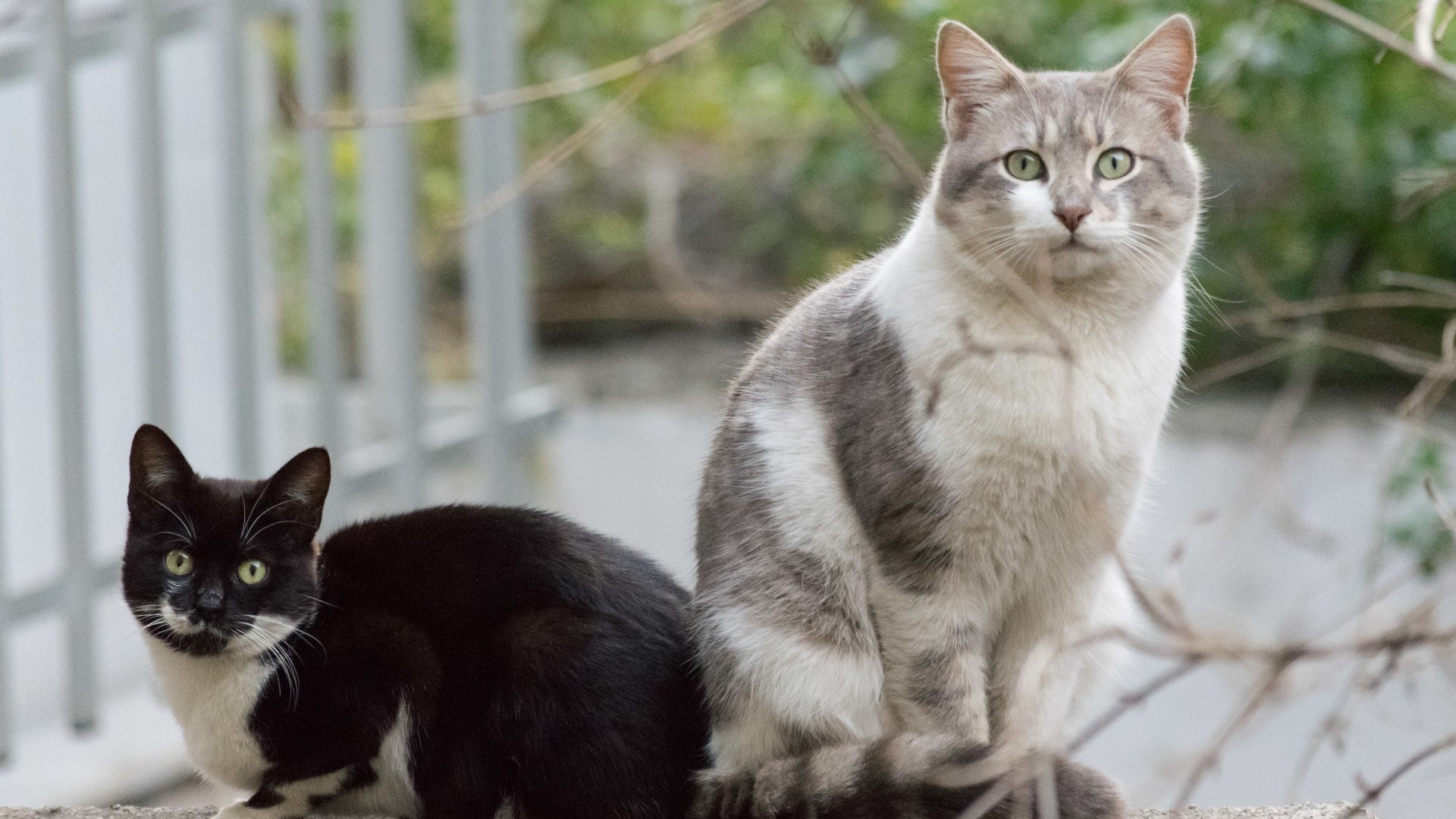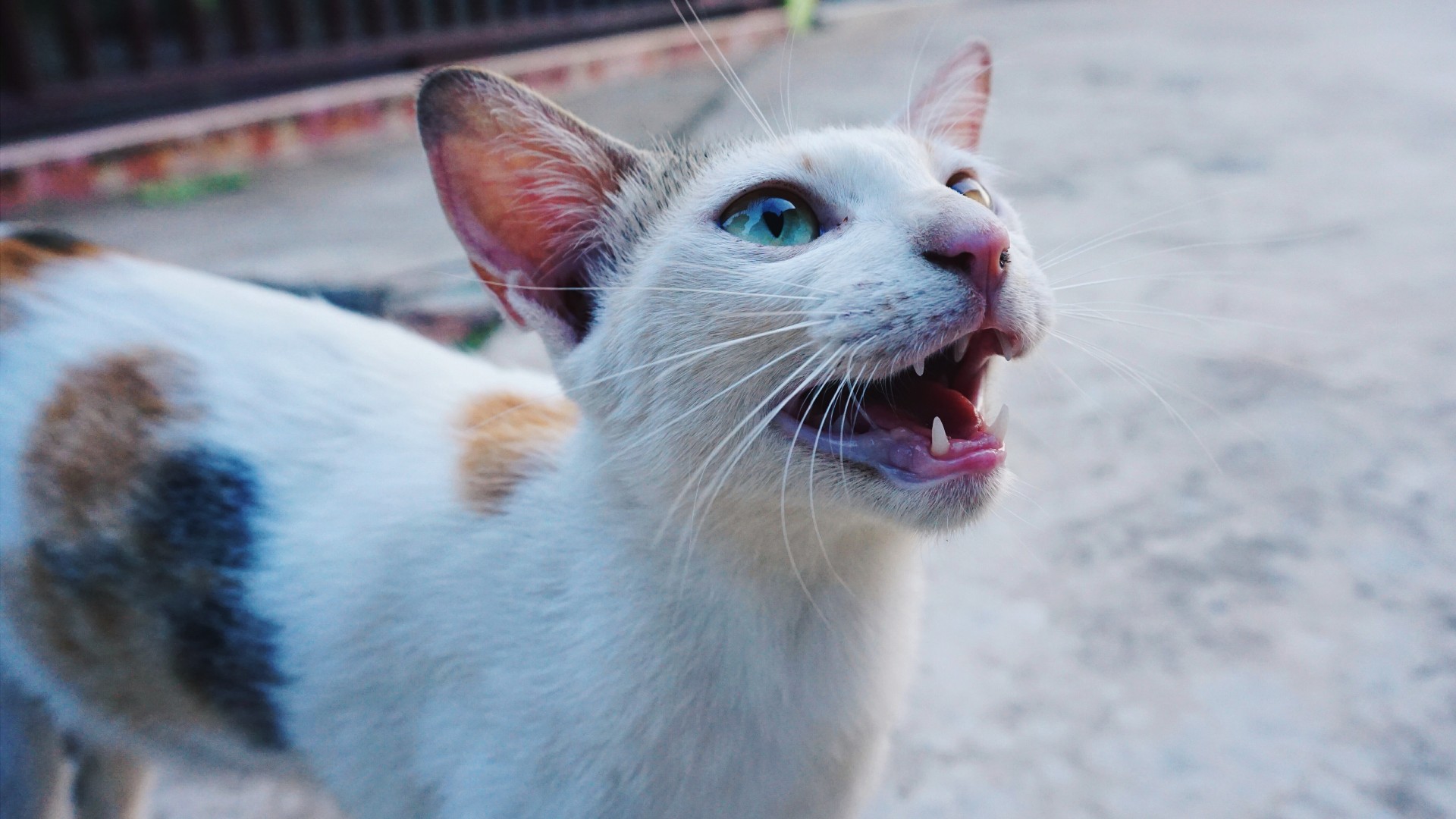How to tell when a cat is in heat: Vet's guide to signs and how to help
Wondering if your cat is in heat? Our vet explains what to look for.

Knowing the signs that your cat is in heat is important for any cat owner. Breeders need to know the signs of a cat in heat so they can breed their cats on the best day. Pet owners need to know the signs of a cat in heat so they can make sure the cat can’t escape and plan their spay operation accordingly. Even owners of spayed cats should know the signs of a female cat coming into season, as accidents do happen, and it’s possible for a spayed cat to still come into heat if they have retained ovarian tissue!
What is happening when a cat is ‘in heat’?
Before we delve into the signs of being in heat, it’s worth discussing what’s going on in your cat’s body. Like women, unspayed female cats (called ‘queens’) go through hormone cycles to enable them to become pregnant and support a pregnancy – this is called an ‘oestrus cycle’.
Cats are ‘seasonally polyoestrous’, which means that they have several oestrus cycles at a particular time of year – for cats in the Northern hemisphere, this is January until October, approximately, with cats in colder climates having a shorter time period that they’ll cycle in.
The oestrus cycle consists of a period of being ‘in oestrus’ – aka ‘in heat’ or ‘in season’, when the cat is fertile and looking for a mate – followed by a period of infertility and hormone changes called ‘anoestrus’. Cats will continue through this cycle every 2-3 weeks until they become pregnant or it gets too cold and dark for them, at which point they’ll stop until the day length starts to increase again.
So now we’ve got the biology out of the way, let’s look at some of the signs of a queen in heat so you know what you’re looking out for!
1) She becomes very affectionate
One of the common behavioral changes in a cat in heat is that they become extremely affectionate – or even clingy. You might find your cat wants to be near you at all times, and they’re likely to rub themselves on you and against your furniture. Your cat will probably follow you everywhere, and she may also roll around on the floor more than usual, a little like a cat high on catnip. These affectionate behaviors may sound cute, but most owners find them quite annoying, especially when combined with some of the other behavioral signs of a cat in season!
2) She’ll put her bottom in the air when petted
Cats in heat will often stand in a particular position when you’re stroking them. They’ll lower their front end and put their bottom in the air, with their tail held off to one side. This position is called ‘lordosis’ and is a sign that a cat is ready to mate. If you stroke her back whilst she’s in this position, she may well tread her back feet side to side.
Get the best advice, tips and top tech for your beloved Pets
Lordosis can also occur in cats who have been mated in the past, even if they’re now spayed, so it should be interpreted in conjunction with some of the other signs listed.
3) Her urine may smell more, and she may have changes in urination behavior
If your cat is in heat, she needs to attract a mate. One of the main ways that this solitary species communicates is by scent and scent-marking. So, it’s perhaps not surprising that your cat’s pee will become smellier. She may use the litter tray more, but she may also pee outside of the litter tray or spray furniture or walls in an attempt to let a mate know where she is.
Don’t punish your cat for peeing outside of the tray – she won’t be able to understand why she’s done wrong. Providing extra trays dotted around the house may help her mark her territory whilst not ruining your carpet!
4) She’ll meow loudly

Ever heard of a caterwaul? Whilst this term has come to mean a loud, disturbing noise, it’s also the official name for the screech of a cat in heat. This noise can be very upsetting for a cat’s family, and it’s common for cat owners to bring in their young female cat who is ‘screaming in pain’ only for me to point out that she’s just in season.
This yowling sound is, again, designed to attract a mate – so expect it to be loud, and piercing. It’s more likely in the evening and early morning when cats are most active, and she’s likely to disturb your sleep!
‘Are cats in pain when in heat?’ is a common concern for cat parents, but this feature clears things up.
5) She’ll be prone to escape!
All that attracting a male is no good if your cat is stuck inside. Even if your cat is usually happily an indoor cat, she’ll quickly become a master of escape when she’s in season. A huge number of accidental pregnancies in cats occur because owners were unable to keep their cats indoors during their heat. They’ll get through ridiculously small gaps, out of perilously high windows, and sneak past legs as quick as a flash when doors are opened.
Of course, roads can be dangerous, and never more so than for a cat focussed only on getting mated. If your cat does escape whilst she’s in season, you can be fairly confident she was mated and has a high likelihood of being pregnant, so you should book an appointment with your vet to discuss next steps.
How can I stop the signs of heat in my cat?
Spaying (neutering) your cat before her first heat is considered safe and the best way to prevent unwanted pregnancies, not to mention the stress that a cat in heat places on a household! If she’s already in heat, do your best to keep her inside, and spay her as soon as her heat is over. In some cases, cats can be spayed in heat, but we vets prefer to wait until after as it makes the surgery easier.
Conclusion
The signs of a cat in heat are quite different to those of a dog in heat, but they’re still easy to spot. Remember, cats cycle every 2-3 weeks for most of the year, from the age of around 4-6 months up to 12 years or older. The noise and escape attempts aren’t going to stop any time soon! If you think your cat is in heat, you can talk to your vet about the benefits of spaying for cats.
After graduating as a vet from the University of Nottingham in 2016, Dr. Joanna Woodnutt went on to practice companion animal medicine in the Midlands. She quickly developed a love of consulting and helping clients with medical problems such as dermatology, behavior and nutrition - anything that involved helping clients understand their pets better.
Jo started writing about pet health in 2017, realizing that it meant she could help even more pet parents. Since then, she has written for countless online and print publications and is a regular contributor for Edition Dog Magazine. Jo is the director of The Veterinary Content Company, which she founded in 2020. She is also the founder of Petlearnia, a platform that provides pet e-learning courses for pet parents.
Jo now lives in the Channel Islands with her husband Ian and terrier Pixie.

